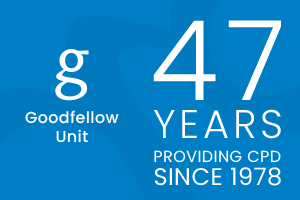
Treatment for type 2 diabetes (T2D) no longer focuses exclusively on HbA1c. Diabetes medications have benefits beyond glycaemic control and treatment guidelines recommend choosing second line therapy according to the presence or absence of coexisting cardiovascular disease, renal disease, heart failure, and weight.
This MedCase considers dulaglutide (Trulicity) for second-line treatment of type 2 diabetes, reviewing the evidence for its effects beyond glycaemic control.
Mr M is a 63-year-old Māori man with T2D on twice daily metformin 1000mg and vildagliptin 50mg who comes to see you for repeat medications and review of his recent blood tests. He feels well today.
Mr M has atrial fibrillation which is well controlled on metoprolol 47.5mg once daily and high blood pressure for which he takes enalapril 20mg once daily. He also takes atorvastatin 40mg for high cholesterol. He is a non-smoker. His father has type 2 diabetes with renal impairment and is currently on dialysis.
His blood pressure is 128/78 mm Hg and his heart rate is 78 with regular rhythm. He weighs 102kg with BMI of 29.5.
Blood test results show estimated glomerular filtration rate (eGFR) of 56 mL/min/1.73m2 and albumin : creatinine ratio (ACR) 4.5 mg/mmol. Low-density lipoprotein (LDL) is 2.8 mmol/L. HbA1c has increased to 64 mmol/mol from 58 mmol/mol three months ago.
How do you manage Mr M?
Managing Mr M’s diabetes and cardiovascular risk are the priorities today.
Mr M has several cardiovascular risk factors, including age >60 years, hypertension, diabetes, atrial fibrillation and a family history of diabetes and renal disease.
His atrial fibrillation and blood pressure are adequately controlled with current therapy. However, he has moderate renal impairment based on his reduced eGFR and moderate microalbuminuria and his HbA1c and lipid management can be improved.
You first discuss cholesterol and suggest switching the dose of atorvastatin to 80mg daily. Mr M is happy with this. He agrees to let you know if he has any side effects after the dose increase; you will consider rosuvastatin if he does not tolerate the higher dose of atorvastatin or fails to achieve the lipid target.
Next, you consider glycaemic control. Mr M is already taking metformin 1000 mg plus vildagliptin 50mg twice daily and has made substantial dietary changes with weight loss of 2kg over the previous 6 months.
How do you address the high HbA1c?
Escalate early for maximum effect
Both the Cardiovascular Disease Risk Assessment and Management for Primary Care1 and the New Zealand Society for the Study of Diabetes (NZSSD) guideline2 recommend escalating treatment for T2D without delay when lifestyle changes and first-line medications fail to achieve targets.
Microvascular risk (retinopathy, nephropathy and neuropathy) increases exponentially with worsening HbA1c control and macrovascular risk increases when HbA1c levels reach the higher end of the normal range.
Second-line therapy is indicated for patients who:
- Are not meeting glycaemic targets (HbA1c >53 mmol/mol);
- Have the following conditions, regardless of glycaemic control/HbA1c:
- 5-year CVD risk of 15% or more;
- Existing CVD;
- Diabetic renal disease (urinary ACR > 3 mg/mmol and/or eGFR <60 mL/min).2
Second-line therapy with a glucagon-like peptide-1 receptor agonist (GLP1RA) or sodium glucose co-transporter 2 inhibitor (SGLT2) inhibitor is recommended. The only funded options are the GLP1RA dulaglutide and the SGLT2 inhibitor empagliflozin, for patients meeting Special Authority criteria. Other GLP1RAs and SGLT2 inhibitors are available but are not funded.
Choice of second-line therapy
Both GLP1RAs and SGLT2 inhibitors reduce HbA1c, weight, risk of cardiovascular disease, and renal disease progression. Importantly, these benefits are independent of glycaemic control.
Patient comorbidities, risk of adverse effects and patient preferences will guide the choice treatment.
There are no head-to-head studies comparing GLP1RAs with SGLT2 inhibitors, but GLP1RAs likely produce greater reductions in weight and glucose levels than SGLT2 inhibitors. Further information about choosing the appropriate treatment can be found in previous MedCases: Optimising therapy for type 2 diabetes with empagliflozin (Jardiance) and Dulaglutide for type 2 diabetes management.
To help decide which second-line therapy is most appropriate for Mr M, you review his history.
He is overweight with high cardiovascular disease risk and evidence of early renal disease.
He has no personal history of cardiovascular disease. However, his father recently had a stroke and Mr M is eager to prevent strokes. The GLP1RA dulaglutide is a good option.
However, Mr M is reluctant to take an injection and for more information about the medication.

Dulaglutide: What is it?
Dulaglutide (brand name: Trulicity) is a once-weekly subcutaneous injection that acts at the GLP1 receptor to reduce blood glucose, delay gastric emptying and increase satiety.3 A key safety feature of GLP1RAs is that their action is glucose-dependent; they do not cause significant hypoglycaemia when used alone without insulin or sulfonylureas.
Dulaglutide and other GLP1RAs reduce HbA1c by up to 25 mmol/mol, depending on the start point, and are more likely than SGLT2 inhibitors to promote weight loss, with 2-5kg weight loss expected over time.
Gastrointestinal adverse effects may occur in up to 1/3 of patients, though these are typically transient and resolve after 3-4 weeks of treatment. Injection site reactions may also occur; recommend different injection sites each week.4
Dulaglutide is contraindicated in patients with type 1 diabetes or those with stage 5 CKD (eGFR <15 mL/min/1.73m2). It is not recommended in patients aged under 18 years, pregnant or breastfeeding patients, or those with severe gastrointestinal disease, medullary thyroid carcinoma or history of MEN2 syndrome.4
Benefits beyond blood glucose
Like other GLP1RAs, dulaglutide has important benefits in addition to glycaemic control, including reducing the likelihood of cardiovascular disease. The REWIND trial5,6,7 was the first to examine the efficacy of a GLP1RA in patients with either existing cardiovascular disease (CVD) or risk factors for CVD; previous studies of GLP1RAs had shown benefit in patients with existing CVD only.
The Researching Cardiovascular Events With a Weekly Incretin in Diabetes (REWIND) trial was a randomised double blind trial across 24 countries – including New Zealand - in 9901 people aged 50 years or more with type 2 diabetes plus either a previous cardiovascular event or cardiovascular risk factors. Participants had HbA1c up to 80 mmol/mol on a maximum of two oral glucose-lowering drugs with or without basal insulin and a BMI of at least 23 kg/m2. Participants received either dulaglutide 1.5mg or equal volume placebo as a once-weekly subcutaneous injection. They were followed up at least 6-monthly for a composite primary outcome of stroke, myocardial infarction or death from cardiovascular or unknown causes. Median follow-up was 5.4 years.
Cardiovascular outcomes
Dulaglutide significantly reduced the incidence of major adverse cardiovascular event (MACE) outcomes, including stroke, myocardial infarction, or death from cardiovascular or unknown causes, compared with placebo.6 The incidence rate for the composite cardiovascular outcome was 2.4 vs 2.7 per 100 person-years with dulaglutide vs placebo, corresponding to a 12% reduction in risk (hazard ratio [HR] 0.88, 95% CI 0.79-0.99; p=0.025).
The greatest benefits were seen amongst patients with previous CVD; number needed to treat (NNT) was 18 for secondary prevention of MACE and 60 for primary prevention of MACE. For primary prevention, only non-fatal stroke was significantly reduced, though the study not adequately powered for primary prevention outcomes and these findings should be interpreted cautiously.
In an exploratory analysis,6 dulaglutide reduced the incidence of stroke (3.2% vs 4.1% with placebo; HR 0·76, 95% CI 0·62–0·94; p=0·01), with significant reductions in ischaemic stroke as well as the composite outcome of non-fatal stroke or all-cause death (0·88, 0·79–0·98; p=0·017) and disabling stroke (0·74, 0·56–0·99; p=0·042); there was no effect on haemorrhagic stroke (1·05, 0·55–1·99; p=0·89).
The impact of dulaglutide and other GLP1RAs on both primary and secondary prevention of CVD is meaningful; there is currently no evidence of SGLT2 inhibitors for primary prevention. Stroke, myocardial infarction and other cardiovascular conditions are common causes of death among patients with type 2 diabetes and treatments that reduce these outcomes must be recommended early.
Renal disease
Dulaglutide significantly reduced the progression of renal disease in an exploratory analysis of the REWIND trial.7 The composite microvascular outcome, comprising the first occurrence of new macroalbuminuria (ACR >33.9 mg/mmol), a sustained reduction from baseline in eGFR of ≥30%, or chronic renal replacement therapy, occurred in 17.1% of dulaglutide versus 19.6% of placebo recipients, corresponding to a 15% risk reduction (HR 0.85, 95% I 0.77-0.93; p-=0.0004). Despite these encouraging results, dulaglutide is yet to be shown to prevent the need for dialysis or death from renal causes.
The beneficial impact on renal disease is not unique to dulaglutide, having been observed with other GLP1RAs, and with SGLT2 inhibitors.8 GLP1RAs can be used from eGFR 15 mL/min/1.73 m2; SGLT2 inhibitors are contraindicated below eGFR 30 ml/min/1.73m2.4
It is also worth noting that dulaglutide has not yet been shown to prevent the need for renal dialysis or death from renal disease.
Cognitive decline
Dulaglutide produced a non-significant reduction in cognitive decline in a further exploratory analysis of the REWIND trial.9
Cognitive function was assessed using the Montreal Cognitive Assessment (MoCA) and Digit Symbol Substitution Test (DSST) and the primary outcome was first occurrence of a follow-up score on MoCA or DSST that was 1·5 SDs or more below the baseline mean score in the participant’s country. Risk of cognitive impairment was reduced by 14% with dulaglutide after post-hoc adjustment for individual standardised baseline scores (HR 0·86, 95% CI 0·79–0·95; p=0·0018).9
Diabetes is an independent risk factor for cognitive impairment; people with diabetes are up to twice as likely to have cognitive decline or dementia. Effective preventive therapy therefore must be considered early.
You explain to Mr M the potential benefits of dulaglutide therapy and agrees it is a good idea.
He will need to stop vildagliptin, which is contraindicated with a GLP1RA, and you write a prescription for metformin alone which is safe to continue.
Together you review the technique for self-administration of the subcutaneous injection and Mr M plans for Monday to be his regular injection day. You send a prescription to the pharmacy under special authority for dulagutide 1.5mg per week.
Practice points
- Second-line therapy for type 2 diabetes with a GLP1RA or SGLT2 inhibitor is recommended with early escalation to optimise prevention of cardiovascular disease (CVD).
- GLP1RAs offer benefits beyond blood glucose control, including weight reduction and improvements in CVD risk factors and outcomes.
- Dulaglutide (Trulicity) has been shown significantly reduce the incidence of CVD outcomes including stroke, renal disease progression, and potentially cognitive decline.
This MedCase was written by Dr Vicki Mount (MBChB, FRNZCGP, MPH) with expert review by Dr Ryan Paul (BHB, MBChB, FRACP, PhD)
References
MedCase is supported by
Recognition of Learning Activities
Don't forget to log your time with The Royal New Zealand College of General Practitioners portal for recognition of learning activities.



